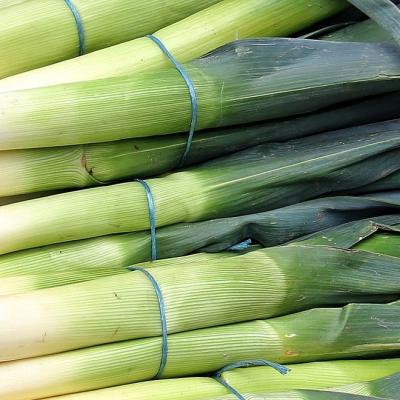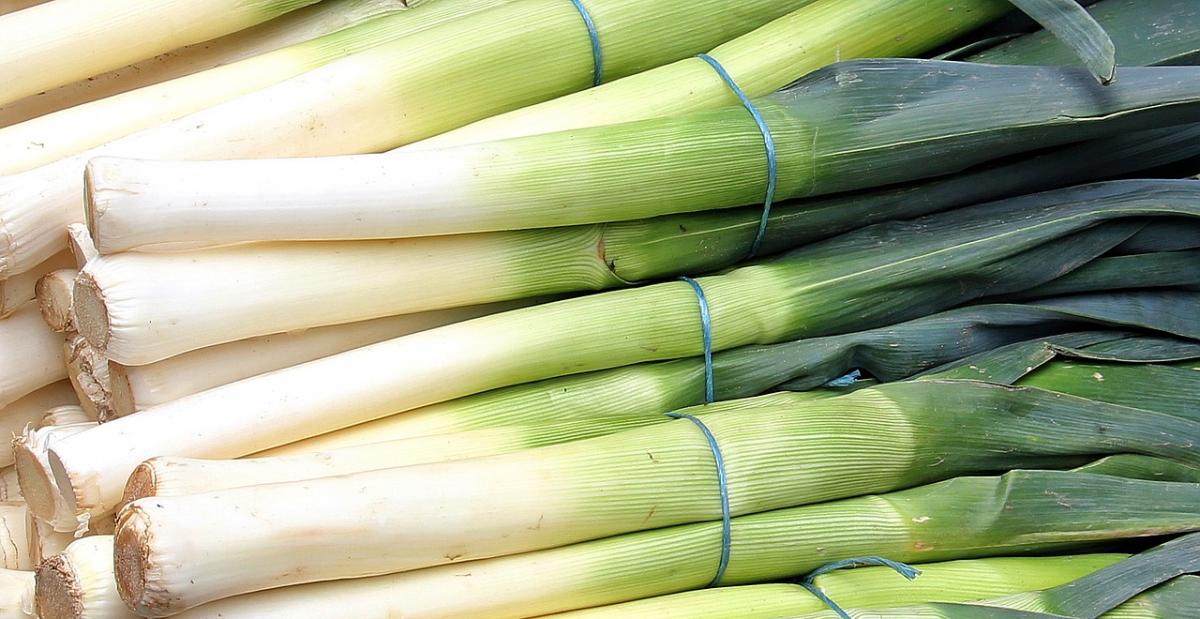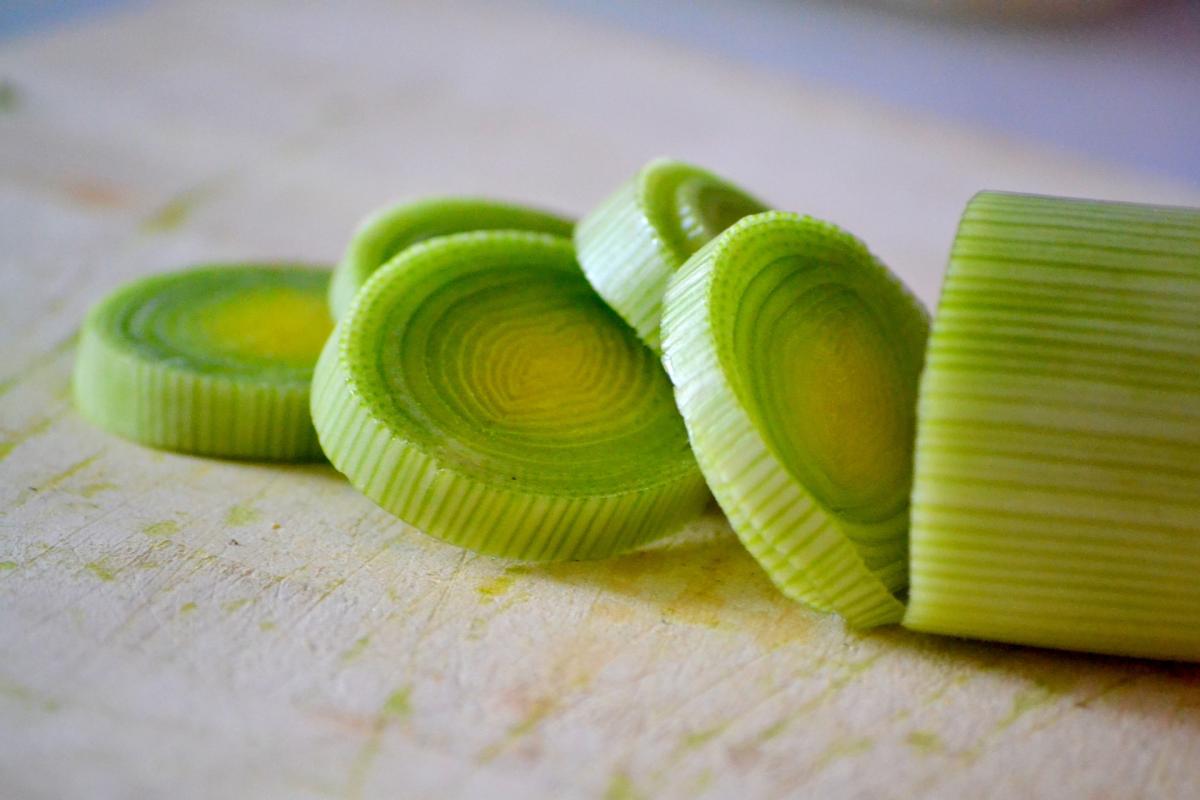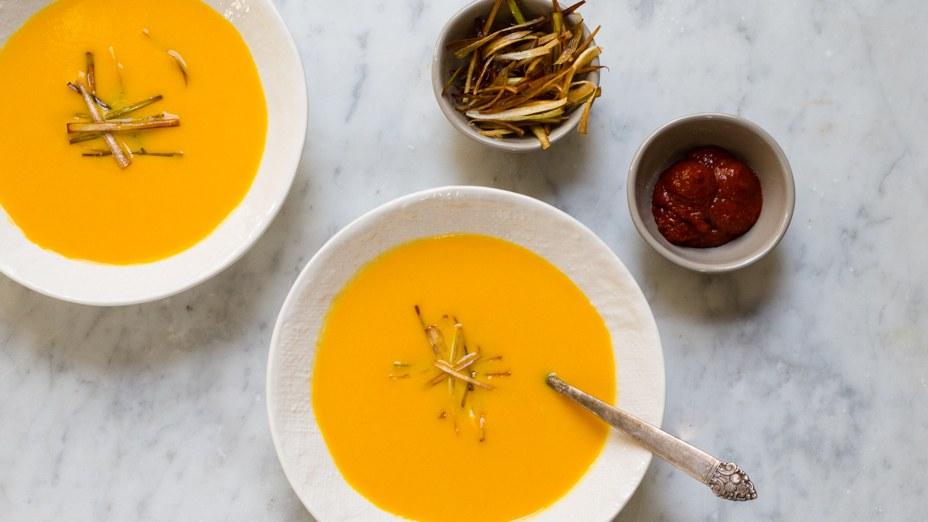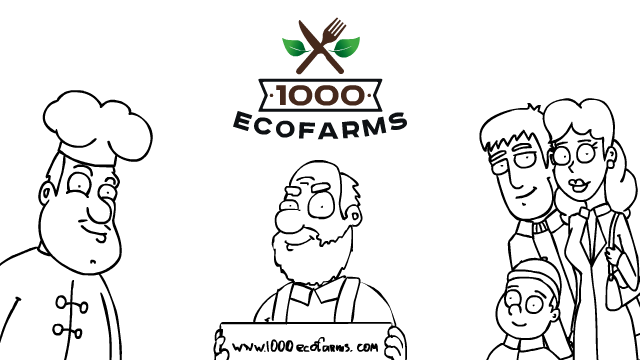The Basics
As one could possibly guess based on their appearance alone, leeks are related to onions and scallions. Unlike their bulbous cousins, leeks are made up of layers of leaves that are tall and cylindrical, with a base that’s white and fades to green at the top, resembling a scallion but taller and thicker.
Leeks are in season October through May, typically peaking in January, and can often be found at farmers markets across the country. Though similar in taste to onions, leeks are known for their milder, sweeter taste, and can add an unexpected flavor when used in place of onions in a recipe.
Believed to have originated in the Mediterranean basin, leeks have been cultivated by humans since at least 2 B.C.E, according to ancient Egyptian drawings. They were even considered a superior vegetable to Egyptian Emperor Nero, who claimed eating leeks improved his singing voice. Though we can’t prove leeks are capable of that (we can’t disprove it either), leeks have been consumed across the world for thousands of years, and for good reason.
How are leeks good for your health?
Leeks are a nutrient-dense vegetable, high in beneficial vitamins, particularly Vitamin A, which aids the immune system, and Vitamin K, which helps build strong bones. Leeks are also a significant source of antioxidants. Studies have shown that plants in the allium family (leeks, onions, garlic) may help lower blood pressure and help prevent heart disease.
How are leeks good for the environment?
From a sustainability standpoint, leeks benefit from being available in the winter. Instead of buying other vegetables that are out of season, fresh leeks can be purchased throughout the winter, often from small-scale, local producers. Additionally, leeks are relatively hardy and easy to grow, meaning they typically require minimal inputs.
How can I use leeks in my home?
Leeks can be eaten in countless ways, but a good rule of thumb is to use them any way that you could use an onion. First, wash them well, trim off and discard the base and most of the green leafy tops. The white cylindrical part can be steamed, sautéed, or used in soups and stews.
Recipe: Coconut-Carrot Soup with Harissa and Crispy Leeks
Here’s a great recipe from Bon Appetit to try for your first attempt at cooking with leeks. In this recipe, leeks are used as a base for the soup, along with carrots, apple, and onion. Then, the soup is topped with additional leeks that have been sautéed crispy. Enjoy!
Recipe: Leek Quiche
If you’d like to try something simpler for your first endeavor with leeks, this recipe for leek quiche from the New York Times Cooking Section is perfect. With nothing but typical quiche ingredients and a ton of leeks, it really lets the vegetable’s sophisticated flavor shine.


